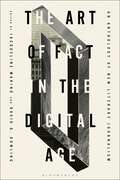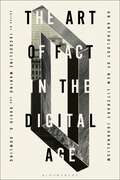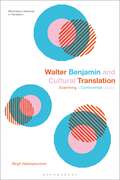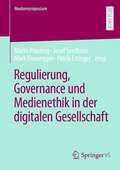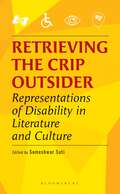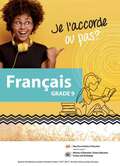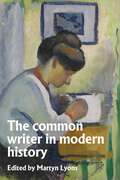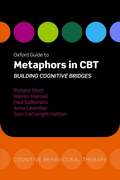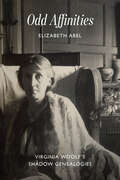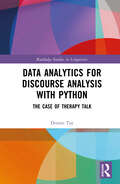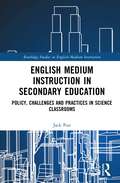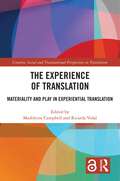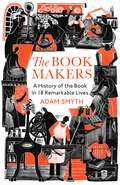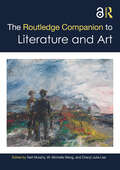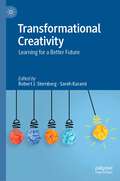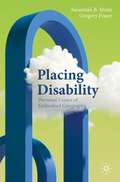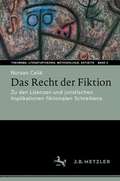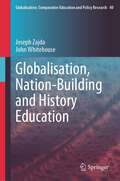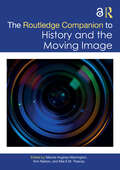- Table View
- List View
The Art of Fact in the Digital Age: An Anthology of New Literary Journalism
The Art of Fact in the Digital Age is a showcase of the most powerful and moving journalism of the past 25 years. Selections include stories originally published in established bastions of literary journalism (The New York Times, The Atlantic and The New Yorker), as well as those from specialized and online publications (Runner's World, The Atavist). It features writers of extraordinary style (including Carina del Valle Schorske, Brian Phillips, and Jia Tolentino), as well as those who have profoundly influenced public discourse on the 21st century's most urgent issues: Mitchell S. Jackson, Clint Smith, and Ta-Nehisi Coates on race; Susan Dominus and Luke Mogelson on migration; and Kathryn Schulz and David Wallace-Wells on environmental threats. It even includes one story that expanded literary journalism's repertoire into audio (This American Life). This collection, assembled for students, scholars, and practitioners alike, also charts the evolution of digital longform journalism through its greatest achievements, from transitioning readers to screens to the integration of multimedia with words in service of meaning. The art of fact in the 21st century opened new ranges of expression to address such issues, while uniquely bearing the imprint of their generation's digital cultures and technologies. Although many forces compete for attention in the digital age, story triumphs. The works in this anthology show us why.
The Art of Fact in the Digital Age: An Anthology of New Literary Journalism
by Jacqueline Marino and David O. DowlingThe Art of Fact in the Digital Age is a showcase of the most powerful and moving journalism of the past 25 years. Selections include stories originally published in established bastions of literary journalism (The New York Times, The Atlantic and The New Yorker), as well as those from specialized and online publications (Runner's World, The Atavist). It features writers of extraordinary style (including Carina del Valle Schorske, Brian Phillips, and Jia Tolentino), as well as those who have profoundly influenced public discourse on the 21st century's most urgent issues: Mitchell S. Jackson, Clint Smith, and Ta-Nehisi Coates on race; Susan Dominus and Luke Mogelson on migration; and Kathryn Schulz and David Wallace-Wells on environmental threats. It even includes one story that expanded literary journalism's repertoire into audio (This American Life). This collection, assembled for students, scholars, and practitioners alike, also charts the evolution of digital longform journalism through its greatest achievements, from transitioning readers to screens to the integration of multimedia with words in service of meaning. The art of fact in the 21st century opened new ranges of expression to address such issues, while uniquely bearing the imprint of their generation's digital cultures and technologies. Although many forces compete for attention in the digital age, story triumphs. The works in this anthology show us why.
Walter Benjamin and Cultural Translation: Examining a Controversial Legacy (Bloomsbury Advances in Translation)
by Birgit HaberpeuntnerDissecting the radical impact of Walter Benjamin on contemporary cultural, postcolonial and translation theory, this book investigates the translation and reception of Benjamin's most famous text about translation, “The Task of the Translator,” in English language debates around 'cultural translation'. For years now, there has been a pronounced interest in translation throughout the Humanities, which has come with an increasing detachment of translation from linguistic-textual parameters. It has generated a broad spectrum of discussions subsumed under the heading of 'cultural translation', a concept that is constantly re-invented and manifests in often heavily diverging expressions. However, there seems to be a distinct constant: In their own (re-)formulations of this concept, a remarkable number of scholars-Bhabha, Chow, Niranjana, to name but a few-explicitly refer to Walter Benjamin's “The Task of the Translator.” In its first part, this book considers Benjamin and the way in which he thought about, theorized and practiced translation throughout his writings. In a second part, Walter Benjamin meets 'cultural translation': tracing various paths of translation and reception, this part also tackles the issues and debates that result from the omnipresence of Walter Benjamin in contemporary theories and discussions of 'cultural translation'. The result is a clearer picture of the translation and reception processes that have generated the immense impact of Benjamin on contemporary cultural theory, as well as new perspectives for a way of reading that re-shapes the canonized texts themselves and holds the potential of disturbing, shifting and enriching their more 'traditional' readings.
Walter Benjamin and Cultural Translation: Examining a Controversial Legacy (Bloomsbury Advances in Translation)
by Birgit HaberpeuntnerDissecting the radical impact of Walter Benjamin on contemporary cultural, postcolonial and translation theory, this book investigates the translation and reception of Benjamin's most famous text about translation, “The Task of the Translator,” in English language debates around 'cultural translation'. For years now, there has been a pronounced interest in translation throughout the Humanities, which has come with an increasing detachment of translation from linguistic-textual parameters. It has generated a broad spectrum of discussions subsumed under the heading of 'cultural translation', a concept that is constantly re-invented and manifests in often heavily diverging expressions. However, there seems to be a distinct constant: In their own (re-)formulations of this concept, a remarkable number of scholars-Bhabha, Chow, Niranjana, to name but a few-explicitly refer to Walter Benjamin's “The Task of the Translator.” In its first part, this book considers Benjamin and the way in which he thought about, theorized and practiced translation throughout his writings. In a second part, Walter Benjamin meets 'cultural translation': tracing various paths of translation and reception, this part also tackles the issues and debates that result from the omnipresence of Walter Benjamin in contemporary theories and discussions of 'cultural translation'. The result is a clearer picture of the translation and reception processes that have generated the immense impact of Benjamin on contemporary cultural theory, as well as new perspectives for a way of reading that re-shapes the canonized texts themselves and holds the potential of disturbing, shifting and enriching their more 'traditional' readings.
Regulierung, Governance und Medienethik in der digitalen Gesellschaft (Mediensymposium)
by Marlis Prinzing Josef Seethaler Mark Eisenegger Patrik EttingerUnsere stark von netzbasierten und global verflochtenen Machtstrukturen geprägten Gesellschaften offenbaren angesichts globaler Herausforderungen und Krisen (u.a. menschengemachter Klimawandel; Corona-Pandemie; Big Data und Überwachung) ungelöste Fragen zu Ethik und Regulierung der öffentlichen Kommunikation, zu deren Klärung die Kommunikations- und Medienwissenschaft einiges beitragen kann. Die Pandemie beispielsweise ist unter anderem eine kommunikative Herausforderung, an der sich die prägende Bedeutung eines ethischen Kompasses für die Orientierung und Qualität von Journalismus erweist. Für demokratische Gesellschaften bleibt der öffentliche Diskurs zwar konstitutiv, aber zugleich gewinnt die Fähigkeit, mit Dissonanz und Streit umzugehen, immer mehr an Bedeutung. Die Beiträge des Bands befassen sich mit Theoriebildung und Normsetzung, Regulierungs- und Governancestrukturen, Regulierungsinhalten und Regulierungsherausforderungen, sowie mit Überlegungen zu einer Neujustierung der Kommunikations- und Medienethik.
Retrieving the Crip Outsider: Representations of Disability in Literature and Culture
by Someshwar SatiWhy are abnormal figures at the heart of literary canon and what do they tell us about the society that writes and circulates these stories? This book studies the constitution of disability and discusses concepts of corporeal difference that are socio-historically rooted in the Indian cultural milieu.The volume aims at looking at the central issue of the various aspects of disability representation, the impact of these representations on the materially embodied experience of disablement, the political imperatives shaping the narratives of corporeal difference, and the influences of highly particularised local cultural context on the constitution of epistemic and discursive notions of corporeality.The volume follows three routes of inquiry: How do we find 'disability' in texts or, what are 'disability texts'? How do we read concepts historically using literary and cultural texts and what would a similar study of the Indian context reveal? How do we study culturally distinct ways of narrating bodyminds? These questions will be answered through a discussion of representation histories of the abnormal informed by histories of disease conditions and its representations, with the aim of developing ways of thinking and talking about concepts of corporeal difference that are socio-culturally and socio-historically located away from the western context and to explore the intersections between gender, caste, religion, sexuality, class and disability.
Français class 9 - MIE
by Mauritius Institute of EducationLe manuel de français de 9e année, élaboré par l'Institut d'Éducation de Maurice en 2021, est une ressource complète conçue pour améliorer la maîtrise de la langue en accord avec le Cadre National du Curriculum. Les contributeurs, dont le Professeur Vassen Naëck et le Dr. Vèle Putchay, ont élaboré une approche pédagogique qui s'appuie sur les compétences fondamentales acquises en 7e et 8e année. Le manuel met l'accent sur le développement des compétences linguistiques et de communication essentielles pour une expression et une compréhension efficaces. À travers des unités dédiées à la correspondance écrite, aux textes argumentatifs et au reportage, les élèves sont guidés à travers des exercices qui favorisent un apprentissage progressif et une préparation à l'examen national de 9e année. Avec son programme structuré et son contenu captivant, le manuel constitue un outil précieux pour les élèves désireux de maîtriser la langue française et d'exceller dans leurs études.
The common writer in modern history
by Martyn LyonsThis book underlines the importance of writing for the subordinate classes, and the variety of uses to which it was put. In eleven new studies by thirteen leading historians of scribal culture, it foregrounds the ‘common writer’ and contributes to a ‘New History from Below’. The book presents pauper letters, ego-documents, life-writing of various kinds, soldiers’ and emigrants’ correspondence, handwritten newspapers and graffiti in streets and prisons, analysing the major genres of ‘ordinary writings’. The studies draw on different disciplines, including cultural history, sociology and ethnography, folklore studies, palaeography and socio-historical linguistics. They range from the early modern Hispanic Empire to twentieth-century Australia, including studies of modern Britain, Iceland, Finland, Italy, Germany, South Africa and the USA. The book demonstrates the importance of studying manuscript culture to give a voice, a presence and dignity to the ordinary protagonists of history.
The common writer in modern history
by Martyn LyonsThis book underlines the importance of writing for the subordinate classes, and the variety of uses to which it was put. In eleven new studies by thirteen leading historians of scribal culture, it foregrounds the ‘common writer’ and contributes to a ‘New History from Below’. The book presents pauper letters, ego-documents, life-writing of various kinds, soldiers’ and emigrants’ correspondence, handwritten newspapers and graffiti in streets and prisons, analysing the major genres of ‘ordinary writings’. The studies draw on different disciplines, including cultural history, sociology and ethnography, folklore studies, palaeography and socio-historical linguistics. They range from the early modern Hispanic Empire to twentieth-century Australia, including studies of modern Britain, Iceland, Finland, Italy, Germany, South Africa and the USA. The book demonstrates the importance of studying manuscript culture to give a voice, a presence and dignity to the ordinary protagonists of history.
Oxford Guide To Metaphors In Cbt: Building Cognitive Bridges (pdf) (Oxford Guides In Cognitive Behavioural Therapy Ser.)
by Richard Stott Warren Mansell Paul Salkovskis Anna Lavender Sam Cartwright-HattonThe business of cognitive therapy is to transform meanings. What better way to achieve this than through a metaphor? Metaphors straddle two different domains at once, providing a conceptual bridge from a problematic interpretation to a fresh new perspective that can cast one's experiences in a new light. Even the simplest metaphor can be used again and again with different clients, yet still achieve the desired effect. One such example is the 'broken leg' metaphor for depression. Clients with depression are understandably frustrated with their symptoms. They may often push themselves to get better or tell themselves that they should be better by now. As a therapist, it is fair to ask, would the client be so harsh and demanding on herself after getting a broken leg? A broken leg needs time to heal and you need to begin to walk on it gradually as it builds up in strength. "You can't run before you can walk" and if you try, you are likely to make it worse. For many clients this simple metaphor is enlightening, changing their view of their symptoms as a sign of their own laziness and worthlessness, to a view of them as part of an understandable illness, that while open to improvement, cannot get better over night. This book is the first to show just how metaphors can be used productively in CBT as an integral part of the treatment. It describes the use of metaphors for a wide range of problems, including anxiety and depression, and provides countless examples of metaphors that have been used by others in CBT. It brings together in one place hundreds of metaphors that experienced therapists have used to great success. It will be a valuable sourcebook for all cognitive behaviour therapists, as well as those training in CBT.
Odd Affinities: Virginia Woolf’s Shadow Genealogies
by Elizabeth AbelA new reading of Virginia Woolf in the context of “long modernism.” In recent decades, Virginia Woolf’s contribution to literary history has been located primarily within a female tradition. Elizabeth Abel dislodges Woolf from her iconic place within this tradition to uncover her shadowy presence in other literary genealogies. Abel elicits unexpected echoes of Woolf in four major writers from diverse cultural contexts: Nella Larsen, James Baldwin, Roland Barthes, and W. G. Sebald. By mapping the wayward paths of what Woolf called “odd affinities” that traverse the boundaries of gender, race, and nationality, Abel offers a new account of the arc of Woolf’s career and the transnational modernist genealogy constituted by her elusive and shifting presence. Odd Affinities will appeal to students and scholars working in New Modernist studies, comparative literature, gender and sexuality studies, and African American studies.
Data Analytics for Discourse Analysis with Python: The Case of Therapy Talk (Routledge Studies in Linguistics)
by Dennis TayThis concise volume, using examples of psychotherapy talk, showcases the potential applications of data analytics for advancing discourse research and other related disciplines.The book provides a brief primer on data analytics, defined as the science of analyzing raw data to reveal new insights and support decision making. Currently underutilized in discourse research, Tay draws on the case of psychotherapy talk, in which clients’ concerns are worked through via verbal interaction with therapists, to demonstrate how data analytics can address both practical and theoretical concerns. Each chapter follows a consistent structure, offering a streamlined walkthrough of a key technique, an example case study, and annotated Python code. The volume shows how techniques such as simulations, classification, clustering, and time series analysis can address such issues as incomplete data transcripts, therapist–client (a)synchrony, and client prognosis, offering inspiration for research, training, and practitioner self-reflection in psychotherapy and other discourse contexts.This volume is a valuable resource for discourse and linguistics researchers, particularly for those interested in complementary approaches to qualitative methods, as well as active practitioners.
Data Analytics for Discourse Analysis with Python: The Case of Therapy Talk (Routledge Studies in Linguistics)
by Dennis TayThis concise volume, using examples of psychotherapy talk, showcases the potential applications of data analytics for advancing discourse research and other related disciplines.The book provides a brief primer on data analytics, defined as the science of analyzing raw data to reveal new insights and support decision making. Currently underutilized in discourse research, Tay draws on the case of psychotherapy talk, in which clients’ concerns are worked through via verbal interaction with therapists, to demonstrate how data analytics can address both practical and theoretical concerns. Each chapter follows a consistent structure, offering a streamlined walkthrough of a key technique, an example case study, and annotated Python code. The volume shows how techniques such as simulations, classification, clustering, and time series analysis can address such issues as incomplete data transcripts, therapist–client (a)synchrony, and client prognosis, offering inspiration for research, training, and practitioner self-reflection in psychotherapy and other discourse contexts.This volume is a valuable resource for discourse and linguistics researchers, particularly for those interested in complementary approaches to qualitative methods, as well as active practitioners.
English Medium Instruction in Secondary Education: Policy, Challenges and Practices in Science Classrooms (Routledge Studies in English-Medium Instruction)
by Jack PunJack Pun presents best practices in pedagogy and teaching to facilitate effective content-subject learning at the secondary school level.Increasingly, parents are sending their children to English Medium Instruction (EMI) secondary schools in their home countries, to prepare them for full immersion in EMI in English native-speaking countries. The book explores the teaching and learning processes in EMI senior secondary science classrooms based in thirty secondary schools in Hong Kong. Conducting analyses of classroom, teacher and student perception data, the author discusses the issues of teaching science through the medium of English in secondary schools, the implications and applications for professional development of science teachers and other content-subject teachers, and suggests strategies for teaching science in different EMI contexts.This volume is highly relevant to scholars in the field of educational linguistics, particularly in English language teaching, content-based instruction, content and language integrated learning, and English as a medium of instruction. It is also useful to education policymakers, school teachers, research students, English and education majors.
English Medium Instruction in Secondary Education: Policy, Challenges and Practices in Science Classrooms (Routledge Studies in English-Medium Instruction)
by Jack PunJack Pun presents best practices in pedagogy and teaching to facilitate effective content-subject learning at the secondary school level.Increasingly, parents are sending their children to English Medium Instruction (EMI) secondary schools in their home countries, to prepare them for full immersion in EMI in English native-speaking countries. The book explores the teaching and learning processes in EMI senior secondary science classrooms based in thirty secondary schools in Hong Kong. Conducting analyses of classroom, teacher and student perception data, the author discusses the issues of teaching science through the medium of English in secondary schools, the implications and applications for professional development of science teachers and other content-subject teachers, and suggests strategies for teaching science in different EMI contexts.This volume is highly relevant to scholars in the field of educational linguistics, particularly in English language teaching, content-based instruction, content and language integrated learning, and English as a medium of instruction. It is also useful to education policymakers, school teachers, research students, English and education majors.
The Experience of Translation: Materiality and Play in Experiential Translation (Creative, Social and Transnational Perspectives on Translation)
by Madeleine Campbell Ricarda VidalCampbell, Vidal and their contributors expand the notion of translation beyond linguistic, modal and medial borders to embrace posthumanist perspectives through a holistic experiential epistemology which envisions translation as engaged, situated social practice.The first of two volumes, this book focuses on questions of materiality and play. Drawing together contributions on theory, methodology and practice from translators, scholars and practitioners working in the creative and performing arts, this book explores how contemporary, experiential acts of interpretation, mediation and negotiation can serve to bridge social and cultural discontinuities across time and space. These range from ancestral past to digital present, from rural to urban environments across the globe. Experiential translation applies a transdisciplinary lens to problematize views of translation and untranslatability traditionally bound by structuralist frames of reference and the reserve of professional linguistic translation. The chapters in this book apply this experiential lens to understand a pluriverse of creative translation practices where the translator’s subject position in relation to the ‘original’ is transformed by the role of experimentation, creativity and play. This book and its companion volume The Translation of Experience: Cultural Artefacts in Experiential Translation will be of particular interest to translators and arts practitioners, scholars and researchers in the transdisciplinary field of humanities.Funding: This work was supported by UKRI under AHRC Grant AH/V008234/1, awarded to Ricarda Vidal, King’s College London (Principal Investigator) and Madeleine Campbell, University of Edinburgh (Co-Investigator).
The Experience of Translation: Materiality and Play in Experiential Translation (Creative, Social and Transnational Perspectives on Translation)
by Madeleine CampbellCampbell, Vidal and their contributors expand the notion of translation beyond linguistic, modal and medial borders to embrace posthumanist perspectives through a holistic experiential epistemology which envisions translation as engaged, situated social practice.The first of two volumes, this book focuses on questions of materiality and play. Drawing together contributions on theory, methodology and practice from translators, scholars and practitioners working in the creative and performing arts, this book explores how contemporary, experiential acts of interpretation, mediation and negotiation can serve to bridge social and cultural discontinuities across time and space. These range from ancestral past to digital present, from rural to urban environments across the globe. Experiential translation applies a transdisciplinary lens to problematize views of translation and untranslatability traditionally bound by structuralist frames of reference and the reserve of professional linguistic translation. The chapters in this book apply this experiential lens to understand a pluriverse of creative translation practices where the translator’s subject position in relation to the ‘original’ is transformed by the role of experimentation, creativity and play. This book and its companion volume The Translation of Experience: Cultural Artefacts in Experiential Translation will be of particular interest to translators and arts practitioners, scholars and researchers in the transdisciplinary field of humanities.Funding: This work was supported by UKRI under AHRC Grant AH/V008234/1, awarded to Ricarda Vidal, King’s College London (Principal Investigator) and Madeleine Campbell, University of Edinburgh (Co-Investigator).
The Book-Makers: A History of the Book in 18 Remarkable Lives
by Adam SmythA celebration of the printed book, told through the lives of 18 people who took it in radical new directions.‘Amazing. This book is a soul-expanding celebration of the human spirit’ MARTIN LATHAM, author of The Bookseller's Tale‘Will delight any booklover’ ROLAND ALLEN, author of The NotebookThis is an extraordinary story of skill, craft, mess, cunning, triumph, improvisation, and error. Of printers and binders, publishers and artists, paper-makers and library founders.Some we know. We meet jobbing printer (and United States Founding Father) Benjamin Franklin, and watch Thomas Cobden-Sanderson conjure books that flicker between the 20th and 15th centuries. Others we’ve forgotten. We don't recall Sarah Eaves, wife of John Baskerville, and her crucial contribution to the history of type. Nor Charles Edward Mudie, populariser of the circulating library – and the most influential figure in publishing before Jeff Bezos. Nor William Wildgoose, who meticulously bound Shakespeare’s First Folio, then disappeared.The Book-Makers puts people back into the story of the book. It takes us inside the print-shop as the deadline looms and the adrenaline flows – from the Fleet Street of 1492 to present-day New York. It’s a tale of contingencies and quirks, of successes and failures, of routes forward and paths not taken. This is a history of book-making that leaves ink on your fingers, and shows why the printed book will continue to flourish.‘Evocative and fascinating’ EMMA SMITH, author of Portable Magic‘A brilliant time machine of a book’ JOSEPH HONE, author of The Book Forger
The Short Story In English
by Walter Allen[Google Books] Traces the development of the modern short story in English to show how it has grown and changed since rising as a significant literary genre in the late nineteenth century.
The Routledge Companion to Literature and Art (Routledge Literature Companions)
by Neil MurphyThe Routledge Companion to Literature and Art explores the links between literature and visual art from classical ekphrasis through to contemporary experimental forms. The collection’s engagement with diverse literary and cultural artifacts offers a comprehensive survey of the vibrant interrelationships that currently inform literary studies and the arts.Featuring four sections, the first part provides an overview of theoretical approaches to art and literature from philosophy and aesthetics through to cognitive neuroscience. Part two examines one of the most important intersections between text and image: the workings of ekphrasis across poetry, fiction, drama, comics, life and travel writing, and architectural treatises. Parts three and four consider intermedial crossings from antiquity to the present. The contributors examine the rich intermedial experiments that range from manuscript studies to infographics in graphic narratives, illuminating the vibrant ways in which texts have intersected with illustration, music, dance, architecture, painting, photography, media installations, and television.Throughout this dynamic collection of 37 chapters, the contributors evolve existing critical debates in innovative new directions. The volume will be a critical resource for advanced undergraduate and graduate students, as well as specialist scholars working in literary studies, philosophy of art, text and image studies, and visual culture.The Introduction and Chapters 10, 14 and 37 of this book are freely available as a downloadable Open Access PDF at http://www.taylorfrancis.com under a Creative Commons Attribution (CC-BY) 4.0 license.
Transformational Creativity: Learning for a Better Future
by Robert J. Sternberg Sareh KaramiThis edited volume brings together leading scholars in diverse disciplines to share their best thinking on how creativity can be conceived of, taught for, and deployed to serve rather than undermine humanity. Transformational creativity, as defined in this book, is creativity deployed to make a positive, meaningful, and potentially enduring difference to the world. Transformational creativity is compared to transactional creativity, which is creativity deployed in search of a reward, whether externally or internally generated.
Placing Disability: Personal Essays of Embodied Geography (Literary Disability Studies)
by Susannah B. Mintz Gregory FraserPlacing Disability presents an international collection of personal essays that address the experience of disability in particular geographical locations. Each chapter engages the question of what it means to be disabled in a specific place, exploring issues of movement, work and play, community and activism, artistic production, love and marriage, access and social services, family and friendship, memory and aging—all informed by the places that people inhabit. The book is organized in terms of topographies and vistas, rather than being bound by the map, to emphasize the defining, constitutive effects of place. The authors included in Placing Disability hail from different countries, neighborhoods, climates, and landscapes; from various backgrounds and professions; from a range of disciplinary perspectives and strategies. They are trained as academics, literary critics, poets, students, public speakers, memoirists, educators, philosophers, administrators, and activists. Their essays refine our understanding of the complex dynamic between self and circumstance as they survey the impact of geographical region on their life experiences. This book is intended to be useful in creative-writing workshops, Disability Studies seminars, and classes on environmental literature, and to appeal to general readers of memoir as well as to scholars of contemporary body theory or the Anthropocene.
Das Recht der Fiktion: Zu den Lizenzen und juristischen Implikationen fiktionalen Schreibens (Theorema. Literaturtheorie, Methodologie, Ästhetik #3)
by Nursan CelikVerrechtlichungsprozesse von Literatur stellen als Kollisionsfall von Kunstfreiheit und allgemeinem Persönlichkeitsrecht nicht nur für die Jurisprudenz eine Herausforderung dar. Auch die Fiktionstheorie findet im besonderen Redestatus und den Fiktionslizenzen der Literatur ein reiches Feld. Die vorliegende Studie widmet sich systematisch anhand tatsächlich verhandelter Fälle und mit Blick auf neuere Fiktionsansätze der Frage, ob fiktionalen Texten Persönlichkeitsrechtsverletzungen angelastet werden können. Hierfür wird ausgehend von der Referenzstruktur fiktionaler Literatur untersucht, in welchen Fällen sich Elemente in der Darstellung literarischer Figuren auf reale Personen beziehen lassen und infolgedessen justiziabel werden können.
Globalisation, Nation-Building and History Education (Globalisation, Comparative Education and Policy Research #40)
by Joseph Zajda John WhitehouseThis book uses historiography and discourse analysis to provide a new insight into understanding the nexus between ideologies, the state, and nation-building—as depicted in history school textbooks. It focuses on the interpretation of social and political change, significant events, and examining possible new biases and omissions in school textbooks. The ‘Europeanization’ of history textbooks in the EU is an example of western-dominated Grand Narrative of pluralist democracy, multiculturalism, and human rights, according to the canon of a particularly European dimension. Various public debates in the USA, China, the Russian Federation (RF), Japan, and elsewhere, dealing with understandings of a nation-building, national identity, and history education point out to parallels between the political significance of school history and the history education debates globally.The book demonstrates that the issue of national identity and balanced representations of the past continue to dominate the debate surrounding the goals, dominant ideologies and content of history textbooks, and historical narratives. It concludes that competing discourses and ideologies will continue to define and shape the nature and significance of historical knowledge, ideologies and the direction of values education in history textbooks. This book provides an easily accessible, practical, yet scholarly insights into local and global trends in the field of history education, and should be required reading for a broad spectrum of users, including policy-makers, academics, graduate students, education policy researchers, administrators, and practitioners.
The Routledge Companion to History and the Moving Image (Routledge Companions)
by Marnie Hughes-Warrington Kim Nelson Treacey, Mia E.M.The Routledge Companion to History and the Moving Image takes an interdisciplinary approach to understanding history in moving images. It engages this popular and dynamic field that has evolved rapidly from film and television to digital streaming into the age of user-created content.The volume addresses moving image history through a theoretical lens; modes and genres; representation, race, and identity; and evolving forms and formats. It brings together a range of scholars from across the globe who specialize in film and media studies, cultural studies, history, philosophy of history, and education. Together, the chapters provide a necessary contemporary analysis that covers new developments and questions that arise from the shift to digital screen culture. The book examines technological and ethical concerns stemming from today’s media landscape, but it also considers the artificial construction of the boundaries between professional expertise and amateur production. Each contributor’s unique approach highlights the necessity of engaging with moving images for the academic discipline of history.The collection, written for a global audience, offers accessible discussions of historiography and a compelling resource for advanced undergraduates and postgraduates in history, film and media studies, and communications.Both Chapter 17 and the Afterword of this book are freely available as downloadable Open Access PDFs at http://www.taylorfrancis.com under a Creative Commons [Attribution-Non Commercial-No Derivatives (CC-BY-NC-ND)] 4.0 license.
